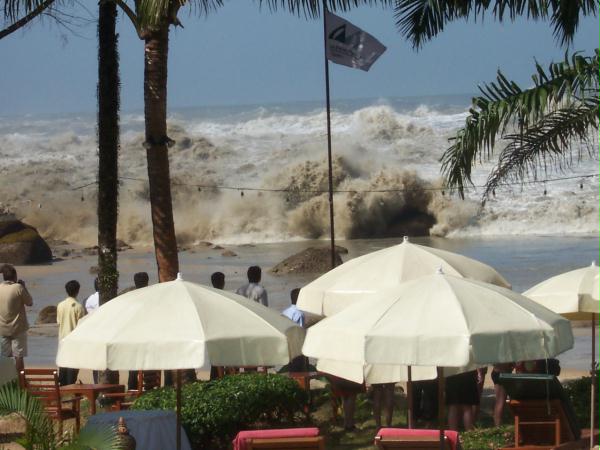Tsunami Survival 101
What would you do if disaster struck?
Tsunamis (pronounced soo-na-mees) are sometimes referred to as tidal waves, although they are actually caused by offshore earthquakes and not by the tide. Whatever you call them, tsunamis are deadly dangerous. They can send a wall of water 100 feet high crashing into people and communities near the shore. Tsunamis can reach many of the coastal regions of the United States, although the most dangerous waves have historically occurred in Hawaii, Alaska, Oregon, Washington state, and California. They can also affect American travelers on beach vacations both here in the states and abroad, and they are not limited to any particular season like many other natural disasters.
 Tsunamis leave a trail of destruction in their path, but you and your family can stay out of harm’s way by being prepared and following the guidelines below.
Tsunamis leave a trail of destruction in their path, but you and your family can stay out of harm’s way by being prepared and following the guidelines below.
Be Prepared for the Worst Before The Wave Strikes
-
Make sure you have a well-stocked emergency kit and a family communication plan.
-
Practice your evacuation routine and be sure you are able to follow the plan, even at night or in bad weather.
-
Know your community’s warning systems and disaster plans. They may save your life!
-
Know the height of your home above sea level and how far it is from the coast. Official emergency orders may be based on these numbers.
-
If you are away from home, be aware of local tsunami procedures. The third floor or higher of a reinforced concrete hotel may provide safety if you cannot evacuate inland.
-
If you are in a coastal area when an earthquake occurs, check the radio, TV, or internet for a tsunami warning.
Act Decisively During a Tsunami
-
IMMEDIATELY follow all evacuation orders.
-
Move as far inland and as high above sea level as possible. Even one foot more may mean the difference between life and death.
-
Never approach the beach! If you can see the wave, you are too close.
-
Be mindful of neighbors that may need extra assistance during an evacuation, such as children and infants, the elderly, or the disabled.
-
Leave your possessions behind! Bring only what you need to survive.
Stay Safe After the Emergency
-
Only return home when officials declare it is safe. Tsunamis often occur in a series, and the first wave may be the smallest!
-
Go to a designated shelter if you feel unsafe in your home or you have been ordered to evacuate. Text SHELTER + your ZIP code to 43362 (4FEMA) to find the nearest shelter.
-
Avoid damaged or flooded areas until officials declare them safe. Also keep clear of any buildings that have water around them. Floodwaters can cause safe-looking buildings to collapse without warning.
-
If you spot someone that is trapped, contact professionals to rescue them. Many good samaritans have been injured or even killed when attempting to help others without the proper equipment and training.
-
Continue listening to a NOAA weather radio, a US Coast Guard radio station, or local TV and radio broadcasts to stay informed. Always wait until you get official clearance to return home.
-
Be careful entering any building or structure that has been damaged. Take each step with caution and look for unsafe conditions before they threaten you.
-
Wear protective clothing and be careful when cleaning up after a tsunami.
-
Since flooding almost always accompanies a tsunami, look at our Flood Safety Facts for more information.

